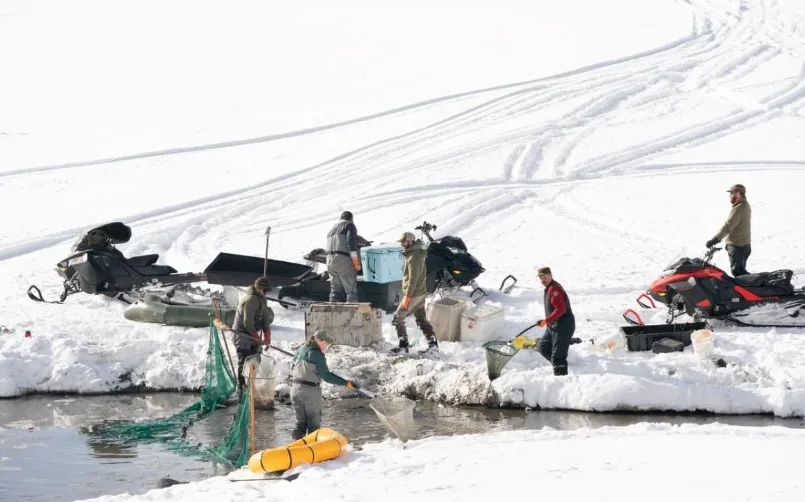JACKSON – Earlier this winter, personnel from the Wyoming Game and Fish Department, the Bridger-Teton National Forest, Grand Teton National Park, and Trout Unlimited worked together to transport 891 green suckers from a shallow pool at Oxbow Bend along the Snake River.
Oxbow Bend, located between Moran Junction and Jackson Lake Dam in Grand Teton National Park, became a temporary trap for these fish due to unusual winter conditions when a spring-fed pool remained free of ice after the surrounding area froze solid. Drawn to the open water, the green suckers became trapped in the shallow pool with no way to return to the river. It does not appear that the conditions in the oxbow that stranded the green suckers were a result of any changes to outflow from Jackson Lake Dam.
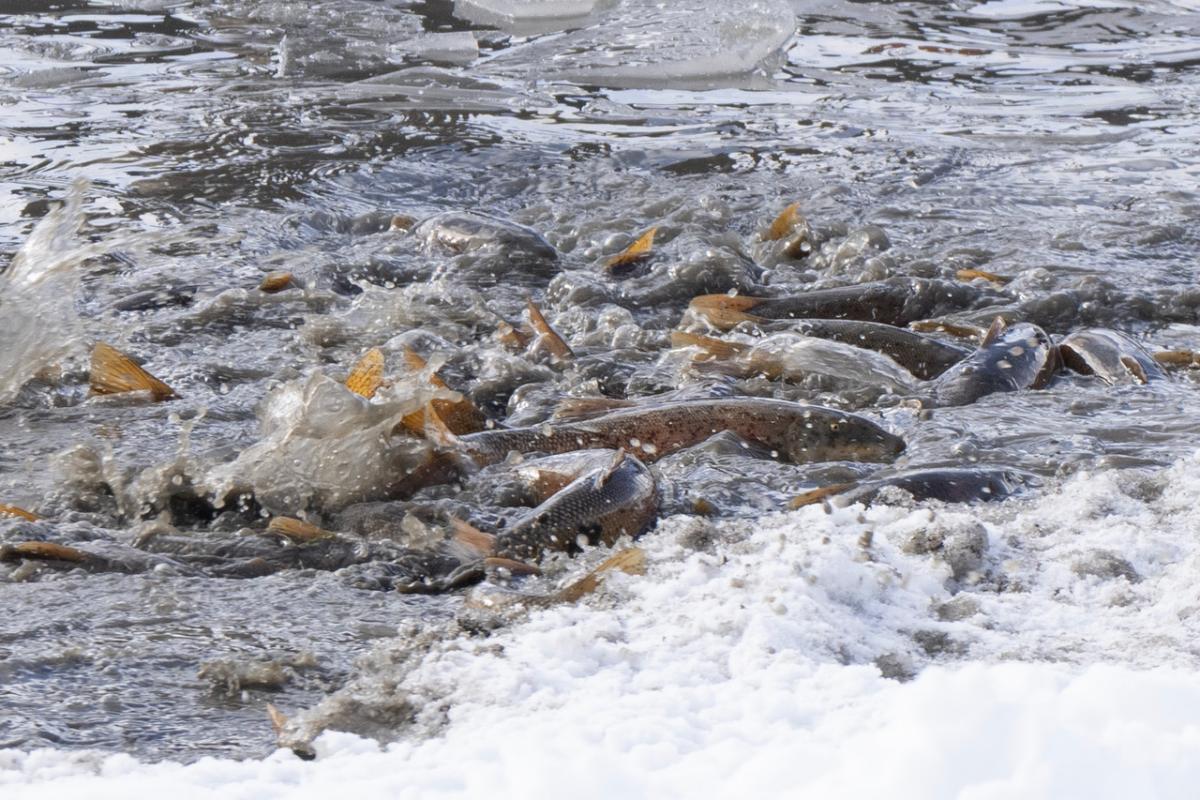
Green suckers can be seen in a shallow pool along Oxbow Bend (Photo courtesy of Karyn Schiller, Private Teton Tours).
A Newly Identified Species
The green sucker is a non-game fish native to Wyoming. For years, it was considered to be the bluehead sucker due to their similar appearance. However, advancements in genetic testing have provided biologists with a clearer understanding of the differences between these species. As a result, the original bluehead sucker has been reclassified as a separate species, and the newly recognized green sucker has been identified.
Wyoming is deeply invested in the conservation of several unique fish species, and the story of the bluehead sucker adds a new layer to Game and Fish’s ongoing conservation efforts.
“The Upper Snake River in Wyoming likely contains the majority of green suckers in existence. Even before the species split, the Upper Snake was considered a stronghold for the bluehead sucker,” said Clark Johnson, Game and Fish fisheries biologist in the Jackson region.
Rescue and Research Efforts
Recognizing the urgency of the situation, Game and Fish biologists organized a plan to move the fish back to safety.
Game and Fish biologists used large nets set from rafts to gently herd the fish into a smaller area, while personnel along the shore scooped them into coolers for transport by snowmobile. The fish were then released into an ice-free section of the river upstream.
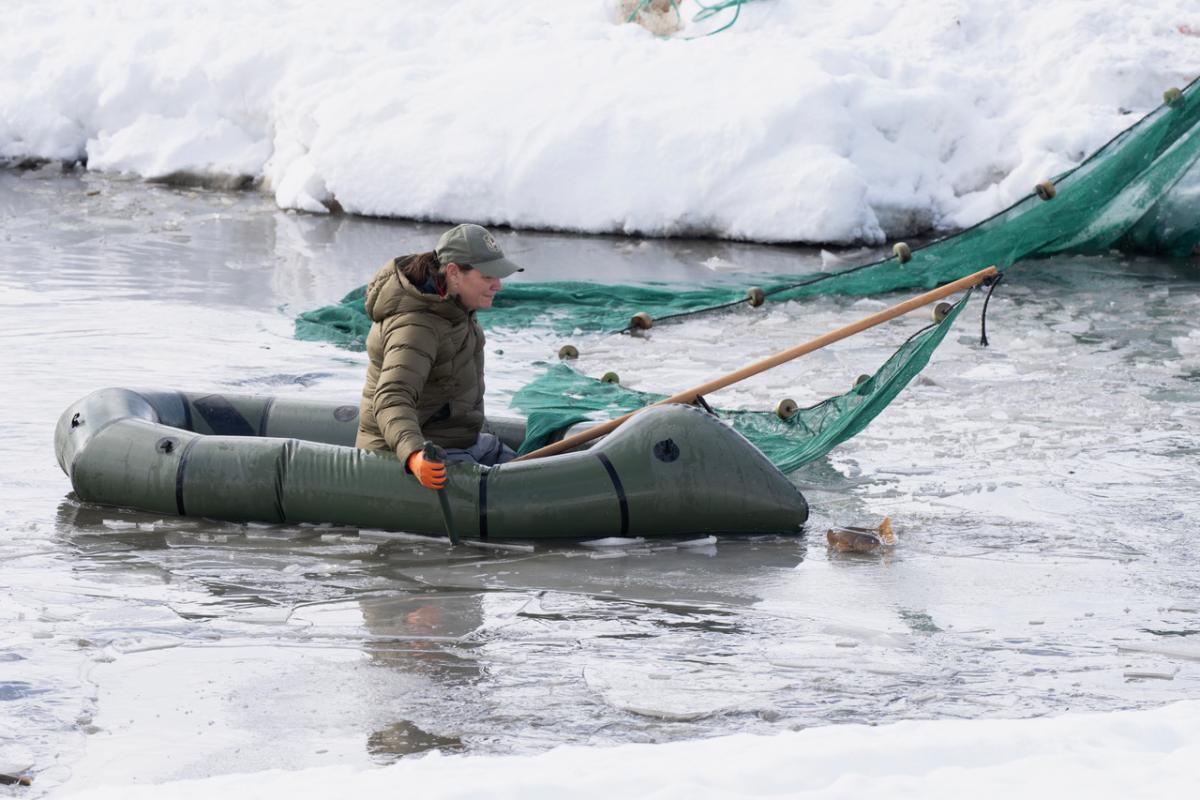
Diana Miller, Jackson Region Game and Fish fisheries biologist sets a net by raft. (Photo courtesy of Karyn Schiller, Private Teton Tours)
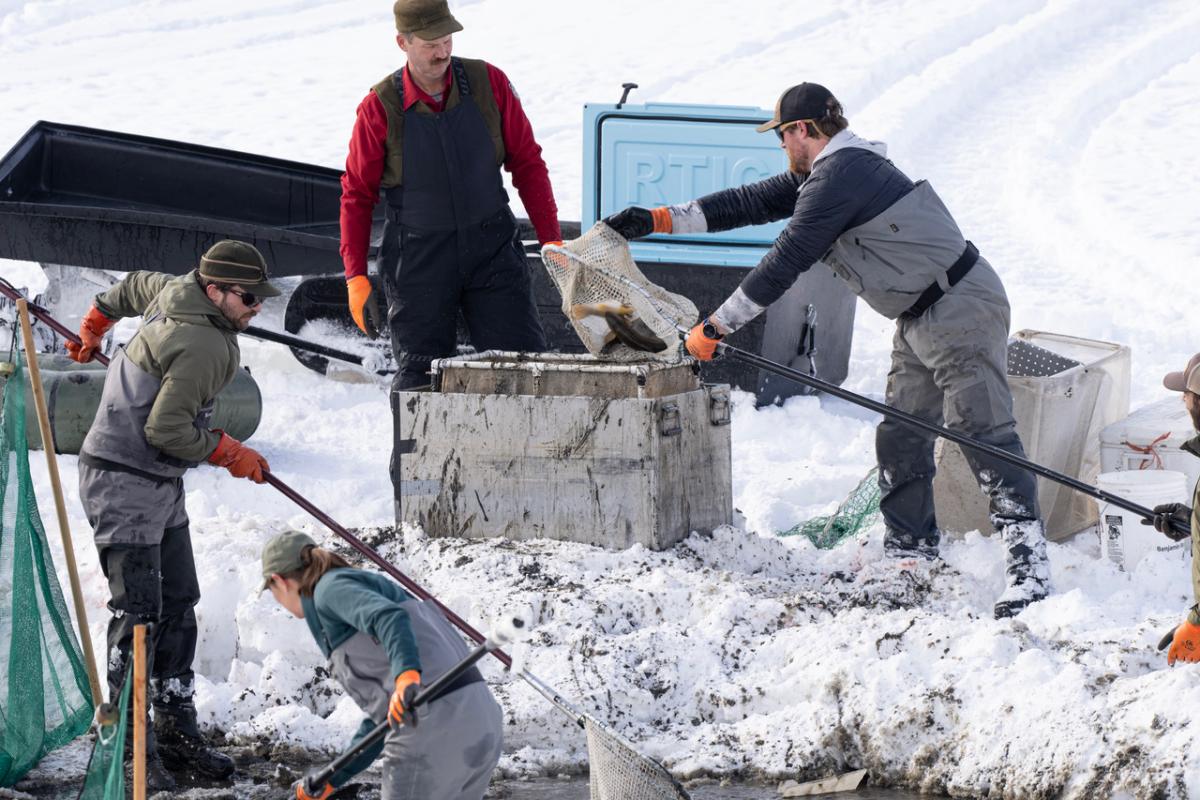
Personnel from the Wyoming Game and Fish Department and the Bridger-Teton National Forest net fish into coolers for transport upstream (Photo courtesy of Karyn Schiller, Private Teton Tours).
43 of the rescued fish were fitted with Passive Integrated Transponder tags. These electronic tags, which last for the fish’s lifetime, will allow researchers to track movements and monitor growth if the fish are recaptured in the future.
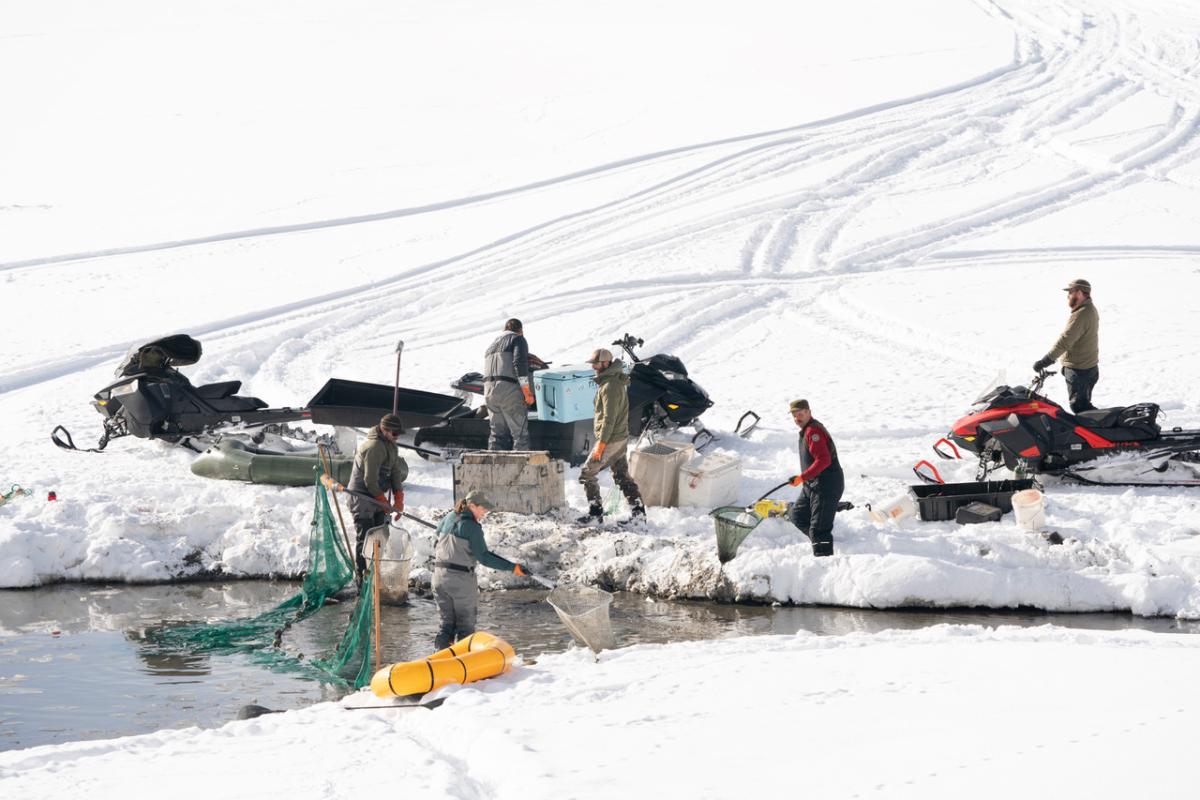
Biologists and game wardens used snowmobiles to transport and release a total of 891 green suckers back into the Snake River. (Photo Courtesy of Karyn Schiller, Private Teton Tours).
Looking Ahead
The recent effort along the Oxbow Bend highlights the importance of continued research into Wyoming’s native fish species. Nearly 15 years ago, Game and Fish hired a contract biologist to launch a study of bluehead suckers—now known to be green suckers—in the Upper Snake River drainage. Radio-tracking data from that study identified the Oxbow Bend and the Snake River Canyon as key overwintering areas.
Game and Fish fisheries biologists in the Jackson Region plan to tag more fish in future surveys to build a detailed capture history, which will help inform conservation efforts.

